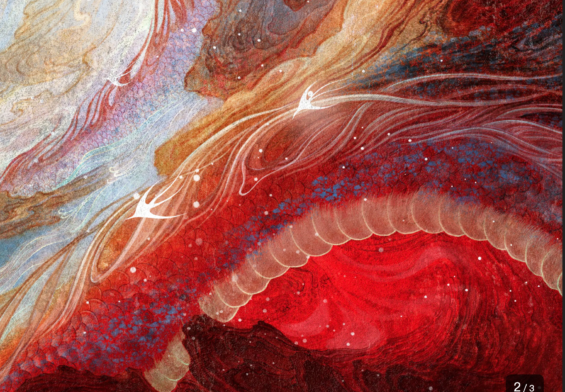Complied by ArtiZen Editor
Sisyphus the Myth

The Myth of Sisyphus is a book written by French philosopher Albert Camus in 1942. Influenced by predecessor philosophers such as Arthur Schopenhauer and Friedrich Nietzsche, Camus introduces his philosophy of the absurd. The absurdity lies in the two parallel lines which will never cross with each other: one line is the fundamental human need to attribute meaning to life and the second line is the “unreasonable silence” of the universe in response.
Common people work hard day after day just to expect a better tomorrow, tomorrow after tomorrow, it’s hard to guarantee a more satisfied result, but death is approaching us closer and closer with each passing day. So what’s the meaning of life if we know our final destination is death and a long burial under the ground? Once stripped off its romanticism, life itself seems so bleak, gloomy, melancholic, and meaningless. The world itself is not absurd, nor human thoughts. But when human beings start to comprehend the world in a so-called reasonable and truthful way, the paradox appears and the juxtaposition between the real reality and human’s translated version of the reality shows the absurdity.
In Greek mythology, Sisyphus was the king of Ephyra, a joint region between Greece and the Peloponnese peninsula, he was punished by Zeus due to his revelation of Zeus’s abduction of the river god’s daughter. After Sisyphus was sentenced to death, he concocted a deceit which helped him escape from the underworld and therefore incurred more wrath from the gods. This time an eternal penalty: The Gods forced him to roll an immense boulder up a hill only for it to roll back down to the valley where it begins, over and over again, repeating this action for eternity. Camus sees Sisyphus as an example of the absurd hero who lives life to its fullest, refuses death and is condemned to a meaningless task. It’s a tragic story as Sisyphus has to spend his life doing futile and repetitive work for an eternal period of time, his sweat and efforts are ceaseless, pointless and meaningless. But what touched Camus in this story is how Sisyphus feels when he goes back down with a heavy stone towards the never-ending torment. Camus suggests that one should not see Sisyphus’s actions as a tragedy but a process he has never considered dull and meaningless, but keep operating the tasks as told and by immersing in this situation, he has forgotten about the life meaning itself but could psychologically turn it into a joyful situation.
“I leave Sisyphus at the foot of the mountain! One always finds one’s burden again. But Sisyphus teaches the higher fidelity that negates the gods and raises rocks. He too concludes that all is well. This universe henceforth without a master seems to him neither sterile nor futile. Each atom of that stone, each mineral flake of that night filled mountain, in itself forms a world. The struggle itself toward the heights is enough to fill a man’s heart. One must imagine Sisyphus happy.” ——Albert Camus

Nihilism as a modern prevailing philosophy
Nihilism is a viewpoint which rejects the fundamental aspects of human existence, namely knowledge, morality and meaning. Nihilists see life as meaningless, human values are baseless, and Christianity is nonsense if taking a closer look at.
Nihilism arises out of nominalism, skepticism, and pessimism. Contemporary understanding of Nihilism stems from German philosopher Nietzsche’s ‘Crisis of Nihilism’.
Nietzsche characterized nihilism as emptying the world and especially human existence of meaning, purpose, comprehensible truth or essential value. This observation stems in part from Nietzsche’s perspectivism, or his notion that ‘knowledge’ is always by someone of some thing: it’s always bound by perspective and it is never mere fact.
“God is dead” is a prevailing theme in Nietzsche’s theory, he thinks Christianity is an antidote against a primal form of nihilism, against the despair of meaninglessness. We have outgrown Christianity not because we lived too far from it, rather because we live too close. Christianity was an interpretation that posited itself as the interpretation, and its dissolution leads beyond skepticism to a distrust of all meaning.
‘A nihilist is a man who judges of the world as it is that it ought not to be, and of the world as it ought to be that it does not exist. According to this view, our existence (action, suffering, willing, feeling) has no meaning: the pathos of ‘in vain’ is the nihilists’ pathos – at the same time, as pathos, an inconsistency on the part of the nihilists.’ —Friedrich Nietzsche

Nihilism In Literature and Media
The term ‘nihilism’ became popular in 1862 by Ivan Turgenev in his novel ‘Father and Sons’, whose hero, Bazarov was a nihilist and found his way challenged upon falling in love.
An early example of nihilistic thought comes from William Shakespeare in the character of Macbeth: in the final act, he concludes his “tomorrow, and tomorrow, and tomorrow” monologue by describing life as ‘a tale told by an idiot, full of sound and fury, signifying nothing’.
Today, the self-destructive and amoral tendencies of a nihilistic worldview appear in many movie, TV shows, and video games:
The 1991 novel ‘American Psycho’ and 2000 film adaptation display both moral and existential nihilism. Bateman does not regret his murder or torture to accomplish his goals, as he realizes the evil in his deed, he tries to take on the punishment for his acts of crime.
In the 2002 film Everything Everywhere All at Once, the lead antagonist, Jobu Tupaki, comes to an existential nihilistic conclusion that the infinite chaos of the multiverse means that there is no reason to continue to exist. She manifests her nihilism by creating a black hole-like “everything bagel” in which she will destroy herself and the rest of the multiverse.
In the 2023 video game, Honkai: Star Rail, ‘Nihility’ is a playable path, presided by the Aeon IX, on which characters who believe that the ultimate fate of the multiverse is nothingness, and therefore, worthless, walk on.




